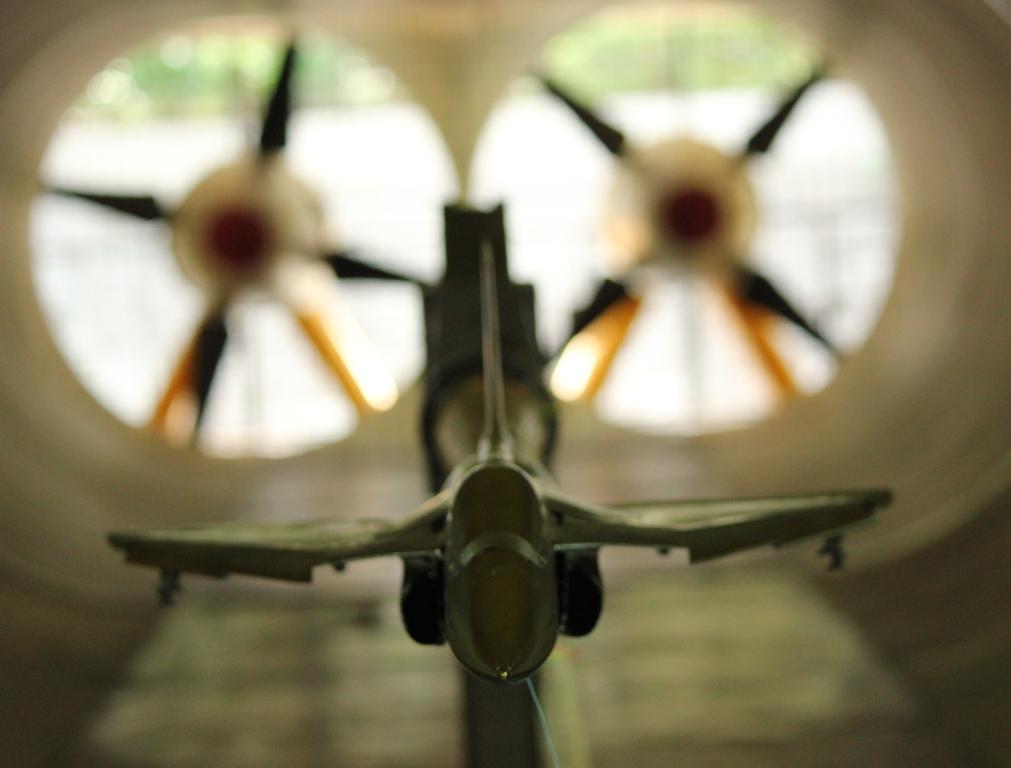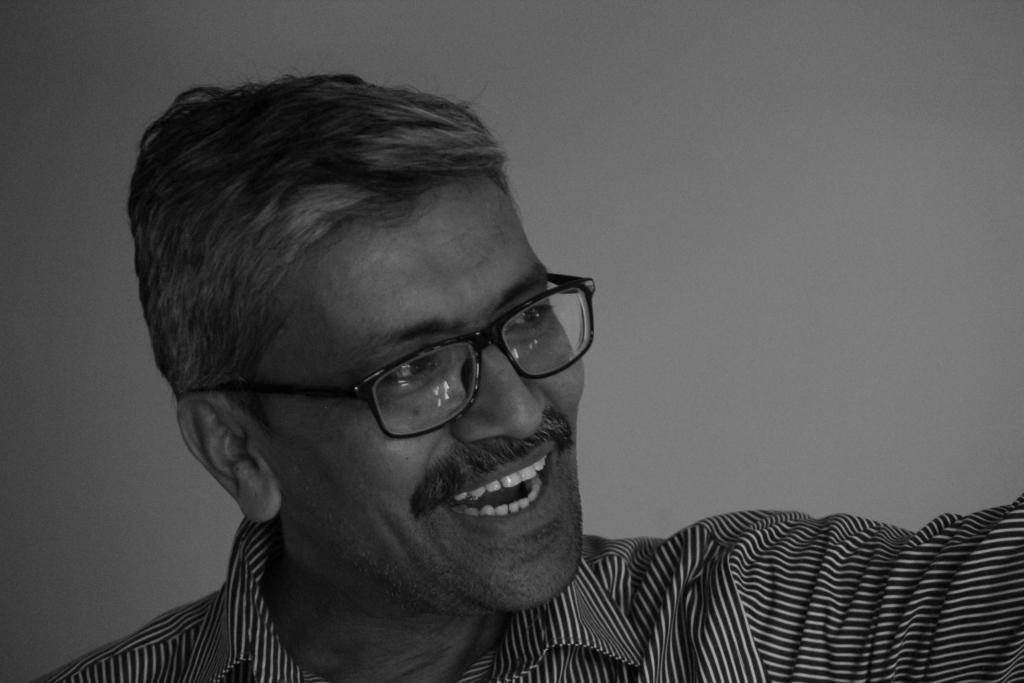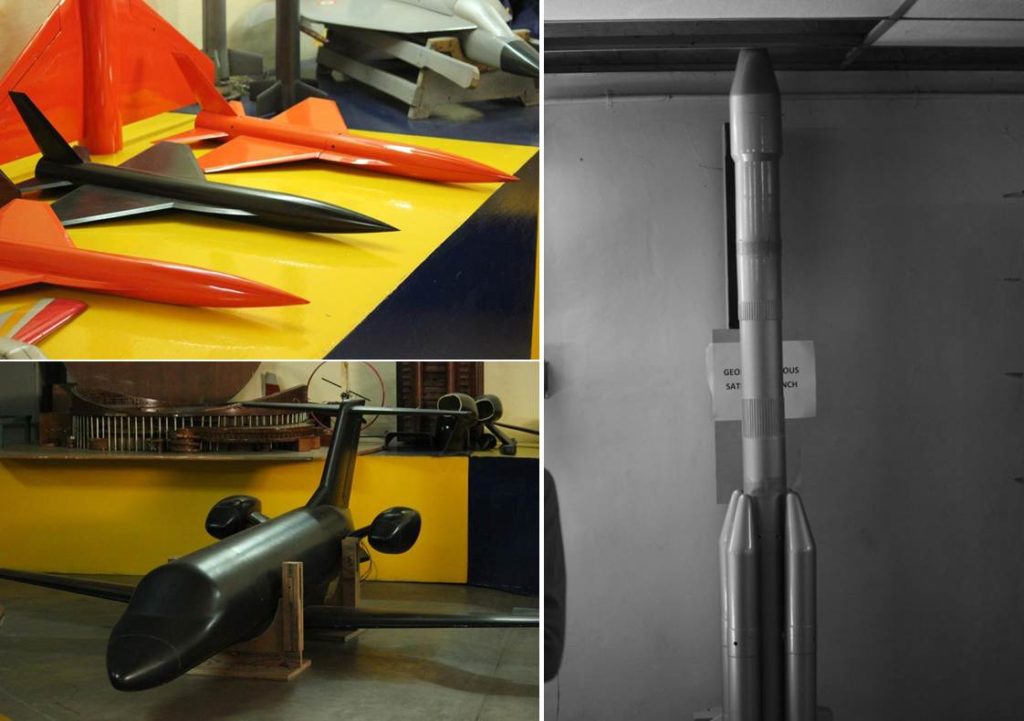V Surendranath on the love of his life – the open-circuit wind tunnel at IISc – and how it has contributed to nation building

V Surendranath is a Principal Research Scientist at the Department of Aerospace Engineering. Since he joined the Institute 27 years ago, he has been closely associated with the open-circuit wind tunnel housed in the original home of the Department (the Department now also has a high-speed wind tunnel complex in its new home). Construction of this wind tunnel began in the early 1950s when the Department was headed by OG Tietjens. It was completed under the stewardship of Satish Dhawan in 1959 and inaugurated by the Maharaja of Mysore, Jayachamarajendra Wadiyar, the same year.
Surendranath spoke to Connect about this facility, its contributions to the growth of aviation in the country, and why he thinks that this old warhorse deserves continued attention.
Could you tell us about your tryst with the Department?
I joined the Department on 4 April 1990. I had taken up two or three jobs before coming here. Once I came to Bangalore, my fascination with the Institute and the renowned Aeronautical Engineering Department [the original name of the Aerospace Engineering Department] only grew because my friend was here at that time and I used to visit him regularly. I have been very fortunate enough to be a part of this Department.
Why do we need wind tunnels?
Wind tunnels help in fine-tuning the design of aircraft, launch vehicles, complex buildings – everything and anything that requires aerodynamic harmony to function perfectly. The designs engineers come up with based on theoretical and empirical equations may not work flawlessly in the real world. Therefore we need these wind tunnels to validate the designs. They are required to show us how efficiently our models work outside the labs, in the real world.
“They [wind tunnels] are required to show us how efficiently our models work outside the labs, in the real world”
Coming to this particular wind tunnel, could you tell us a little bit about it, including some of the significant objects that have been tested here?
The tunnel has been operational since 1960, working relentlessly for the scientific advancement of the country. This large wind tunnel was conceived by people who I believe were visionaries. The ample size of the tunnel makes the test section large and this helps us to test even big objects.
Here we have tested all sorts of objects: chimneys, cooling towers, factories, launch vehicles, ships, and of course many aircraft. We have also provided our service to the LCA [Light Combat Aircraft], AMCA [Advanced Medium Combat Aircraft], ship development and other flight configurations. This was the country’s biggest wind tunnel for many years, and so most of India’s requirements were met by this tunnel. Even now, the lion’s share of the testing is done here.
Are the objects tested to scale?
Yes, they are tested to scale.

What are the models typically made of?
Earlier, especially about 50 years ago, all the models were made of wood. But now with the development of materials science, people are also opting to fashion models out of metal and composite materials such as carbon, glass and even paper. But at the end of the day, we are testing external aerodynamics. We are testing shape, not material. Therefore even models made of gold, platinum, wood or charcoal will give us the same result. What matters is the accuracy with which we fabricate the model.
What has been your most satisfying achievement?
One of our landmark achievements was the flight experiments on the LCA, even before the LCA had flown. But I cannot specifically say that these are my achievements because all the tunnel tests have been a group effort. I am happy that I have contributed to the country in some way.

I believe that the fans in the tunnel have a legacy of their own? Could you tell us more about them?
Our fans were originally made of Andaman Padauk [Pterocarpus dalbergioides] wood. It is a special kind of high-quality wood. We have still preserved one or two blades of the old fan made out of this wood.
Each blade, at top speed, can experience about 30-40 tonnes of load. Surprisingly it has witnessed only two accidents in the 57 years since it started functioning. The first was due to fatigue failure, which happens to all mechanical systems over time. The second accident was due to shear failure. The object went through the mesh and hit the blades of the fan. Since it was rather large, it wrecked the fan blades completely. Due to these structural failures we replaced the wooden blades with composite ones under the guidance of my mentor Prof. SP Govinda Raju [a retired aerospace engineer from IISc], and these fans have been running to this day.
How much does it cost to maintain this facility?
It is difficult to estimate the expenses accurately as this is a government institution. Salaries have to be paid to the staff and the professors. There is a lot of expenditure on maintenance, owing to the large size and the age of the facility. But we also earn money from the projects that we take up here. A large-scale upgrade for this facility which includes replacement of old motors, improvement of the systems and general maintenance would require funding of about Rs. 3-5 crore. Due to high maintenance cost and salary outflow, it is difficult to both sustain and upgrade the facility. We are looking for this kind of bulk funding so that this wind tunnel can be raised to the standards of a world-class facility.
“This was the country’s biggest wind tunnel for many years, and so most of India’s requirements were met by this tunnel. Even now, the lion’s share of the testing is done here”
How many people work here?
When I joined the Department, the number of staff working here was 11. Right now the official number of staff stands at three. Next year it will be two.
The importance accorded to this facility seems to be diminishing. Do you see a continued role for this facility to serve IISc?
I believe wind tunnels will have an important role even for the next hundred years to come. It should function and it will function. Of late, a new field called computational fluid dynamics is gaining importance, and therefore actual experiments are being sidetracked. But computation of some things is extremely complex, whereas a wind tunnel can generate data in ten minutes. This is worth its weight in gold. In order to achieve accuracy, both theoretical and experimental work have to be blended in the right proportion. This is why I strongly believe that whatever advancements may take over the field of aerodynamic science and research, wind tunnels are irreplaceable and they will survive long.
One must also remember that this facility is not just about producing publications, but also about contributing to various projects of national importance. This facility belongs to the nation as much as it belongs to IISc. Therefore the number of publications that result from a wind tunnel must not be the yardstick to measure its importance. My only wish is that with my retirement, the doors of this facility are not locked. It takes just seconds to put a lock on something, but it takes years to open it back again.
“One must also remember that this facility is not just about producing publications, but also about contributing to various projects of national importance. This facility belongs to the nation as much as it belongs to IISc”
What fascinates you about this wind tunnel?
This facility has earned its place in history, and its legacy will live forever. When I have a small cold, I run to the Health Centre and get the necessary medication. That is for our maintenance. But for the last 50 years, these fans have been working continuously. All we do is apply grease once in a year. We don’t even clean the dust on it. This is what fascinates me. When a system runs with this kind of zealous dedication, it is hard not to return the same feeling towards the facility. These fans, they are my babies and I have given them my all. That is the kind of commitment I have towards this facility and it is the kind of commitment that this facility deserves.

This building also has a closed-circuit wind tunnel that has been shut down for several years. Could you shed some light on it?
The closed-circuit wind tunnel was built during the time of World War II by a renowned German architect named Otto Koenigsberger. It was an elliptical section, a standard tunnel – the kind often seen in [scientific] literature. It used to work on a single fan and was an efficient tunnel. However, due to shortage of staff and insufficient funds, it gradually got phased out. But this structure which is of great historical importance now houses the estate office.
*Akhila Thomas is a first-year undergraduate student at Christ University where she is studying English (Hons)




